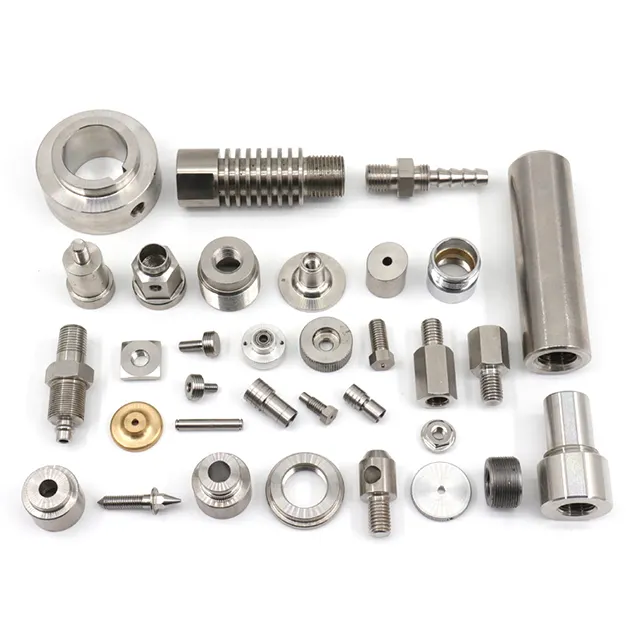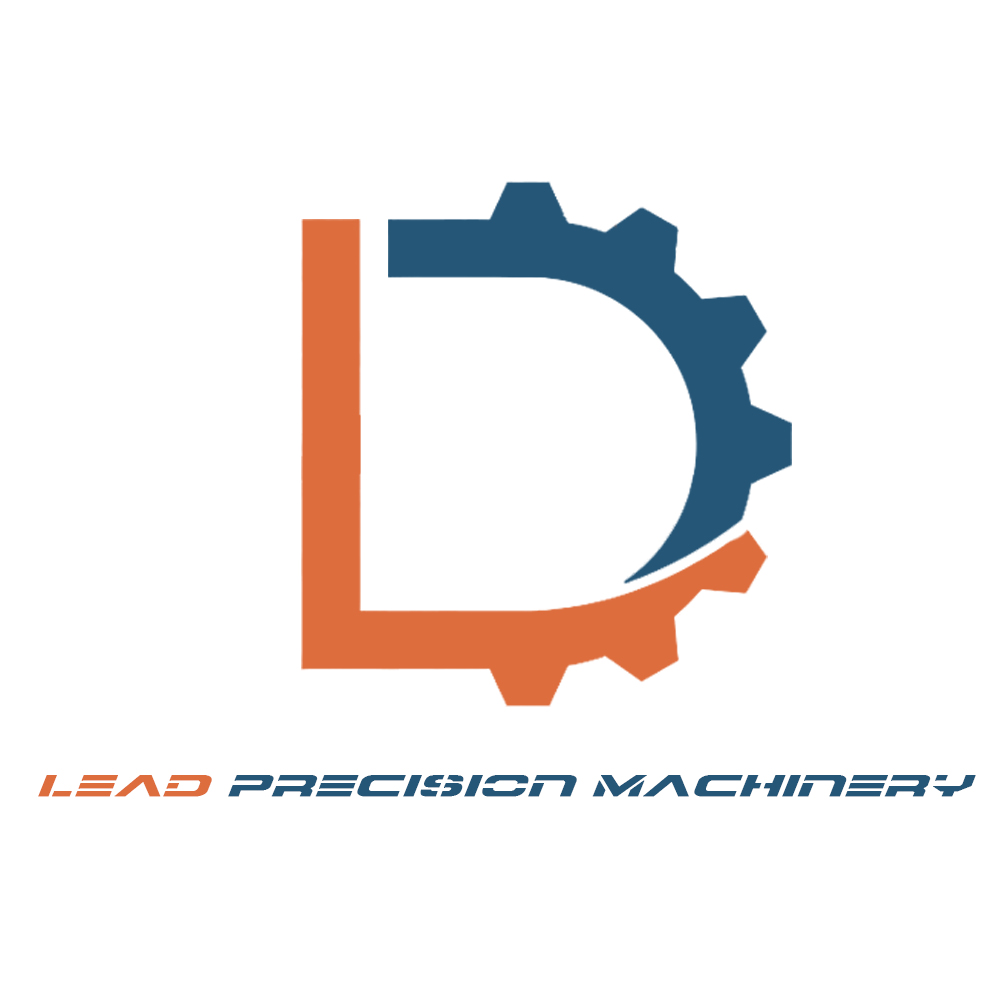Comparing the manufacturing methods, applications, and industries for Aluminum Parts, Stainless Steel Parts, Brass Parts, Titanium Parts, Plastic Parts, and Rubber Products:
| Material | Manufacturing Methods | Applications | Industries |
|---|---|---|---|
| Aluminum Parts | Casting, CNC Machining, Forging, Sheet Metal, Welding, 3D Printing, etc. | Automotive, Aerospace, Construction, Electronics, Consumer Products, etc. | Transportation, Aerospace, Construction, Electronics, Consumer Goods, etc. |
| Stainless Steel Parts | Casting, CNC Machining, Forging, Sheet Metal, Welding, 3D Printing, etc. | Aerospace, Automotive, Medical Devices, Construction, Electronics, etc. | Aerospace, Automotive, Medical, Construction, Food Processing, etc. |
| Brass Parts | Casting, Machining, Sheet Metal, Welding, etc. | Hardware, Plumbing Fixtures, Electronics, Automotive, Musical Instruments, etc. | Construction, Automotive, Music, Plumbing, etc. |
| Titanium Parts | Machining, Casting, Forging, 3D Printing, etc. | Aerospace, Medical Implants, Sports Equipment, Automotive, etc. | Aerospace, Medical, Sports, Automotive, etc. |
| Plastic Parts | Injection Molding, Extrusion, Blow Molding, Thermoforming, 3D Printing, etc. | Packaging, Automotive, Electronics, Medical Devices, Consumer Goods, etc. | Packaging, Automotive, Electronics, Medical, Consumer Goods, etc. |
| Rubber Products | Extrusion, Compression Molding, Injection Molding, Calendering, etc. | Sealing, Damping, Automotive, Healthcare, Industrial, etc. | Automotive, Construction, Healthcare, Manufacturing, etc. |
This table provides a concise comparison of these materials’ manufacturing methods, common applications, and the industries where they are frequently used. Each material has its unique properties and advantages, making them suitable for a wide range of applications across various sectors.

Aluminum Parts
Manufacturing Methods:
Aluminum parts are manufactured through a variety of processes tailored to their specific applications. Casting, both die and sand casting, is commonly used for producing intricate aluminum components, while CNC machining allows for precision shaping. Forging can enhance strength, while extrusion and sheet metal fabrication cater to flat or slightly curved shapes. Welding and 3D printing are other methods, depending on the design and requirements.
Applications:
Aluminum parts find applications across industries. In automotive, they form engine components and body panels. In aerospace, they are used in aircraft structures. The construction industry employs aluminum in building facades and structural elements. Electronics rely on aluminum for heat sinks and cases. The versatility of aluminum extends to consumer products, from smartphones to furniture.
Industries:
Aluminum parts are vital in transportation, aerospace, construction, electronics, and consumer goods sectors. Their lightweight, corrosion resistance, and strength make them indispensable in these industries.
Manufacturing Methods:
Stainless steel parts are crafted using a variety of methods. Casting techniques, such as investment casting and sand casting, yield complex shapes. CNC machining ensures precision. Sheet metal fabrication forms flat parts, while forging enhances strength. Welding and 3D printing are also employed.
Applications:
Stainless steel parts excel in environments requiring corrosion resistance. Aerospace uses them for critical components. Automotive relies on stainless steel exhaust systems. In medical devices, they maintain hygiene. The construction industry utilizes stainless steel in architectural elements.
Industries:
Stainless steel parts are fundamental in aerospace, automotive, medical, construction, and food processing industries, thanks to their corrosion resistance and durability.
Brass Parts
Manufacturing Methods:
Brass parts are shaped through processes like casting, machining, and sheet metal fabrication. Casting includes sand and investment casting. Machining ensures precision for intricate parts. Sheet metal fabrication is used for panels and connectors.
Applications:
Brass parts shine in decorative elements like hardware and musical instruments. Plumbing fixtures rely on their corrosion resistance. Electronics use brass connectors. Automotive incorporates brass in bearings.
Industries:
Brass parts are indispensable in the construction, automotive, music, and plumbing industries due to their corrosion resistance, aesthetics, and machinability.
Titanium Parts
Manufacturing Methods:
Titanium parts are created using machining, casting, forging, and 3D printing. CNC machining allows for precision shaping. Casting includes investment and sand casting. Forging enhances mechanical properties, and 3D printing offers complex geometries.
Applications:
Titanium parts are a staple in aerospace for their strength-to-weight ratio. Medical implants rely on biocompatibility. Sports equipment utilizes titanium’s durability, and automotive employs it in lightweight components.
Industries:
Aerospace, medical, sports, and automotive industries benefit from titanium parts due to their exceptional strength, lightness, and corrosion resistance.
Plastic Parts
Manufacturing Methods:
Plastic parts are produced using methods like injection molding, extrusion, blow molding, thermoforming, and 3D printing. Injection molding suits high-volume production, while extrusion forms continuous shapes. Blow molding creates hollow parts. Thermoforming shapes heated plastic, and 3D printing allows customization.
Applications:
Plastic parts are everywhere. In packaging, they create bottles and containers. Automotive uses them for interior components. Electronics rely on plastic casings, and medical devices incorporate plastic components.
Industries:
Plastic parts are versatile and are employed in packaging, automotive, electronics, medical, and consumer goods industries for their cost-effectiveness and design flexibility.
Rubber Products
Manufacturing Methods:
Rubber products are manufactured using processes like extrusion, compression molding, injection molding, and calendering. Extrusion forms continuous shapes like seals and gaskets. Compression molding involves shaping rubber under heat and pressure. Injection molding creates intricate parts, and calendering produces sheets.
Applications:
Rubber products are essential for sealing and damping. They seal doors and windows, dampen vibrations in vehicles, and protect against impact. In industrial settings, rubber components isolate machinery vibrations. In healthcare, rubber is used in gloves and medical devices.
Industries:
Rubber products find applications in automotive, construction, healthcare, and manufacturing industries, thanks to their elasticity, resilience, and shock-absorbing properties.
These materials and their respective manufacturing methods serve as the backbone of numerous industries, each offering unique properties and advantages. Whether it’s the strength of stainless steel, the lightweight nature of aluminum and titanium, the versatility of plastic, or the elasticity of rubber, these materials play crucial roles in shaping our modern world. They are a testament to the incredible innovation and engineering across a wide range of industries, all of which contribute to our everyday lives.

